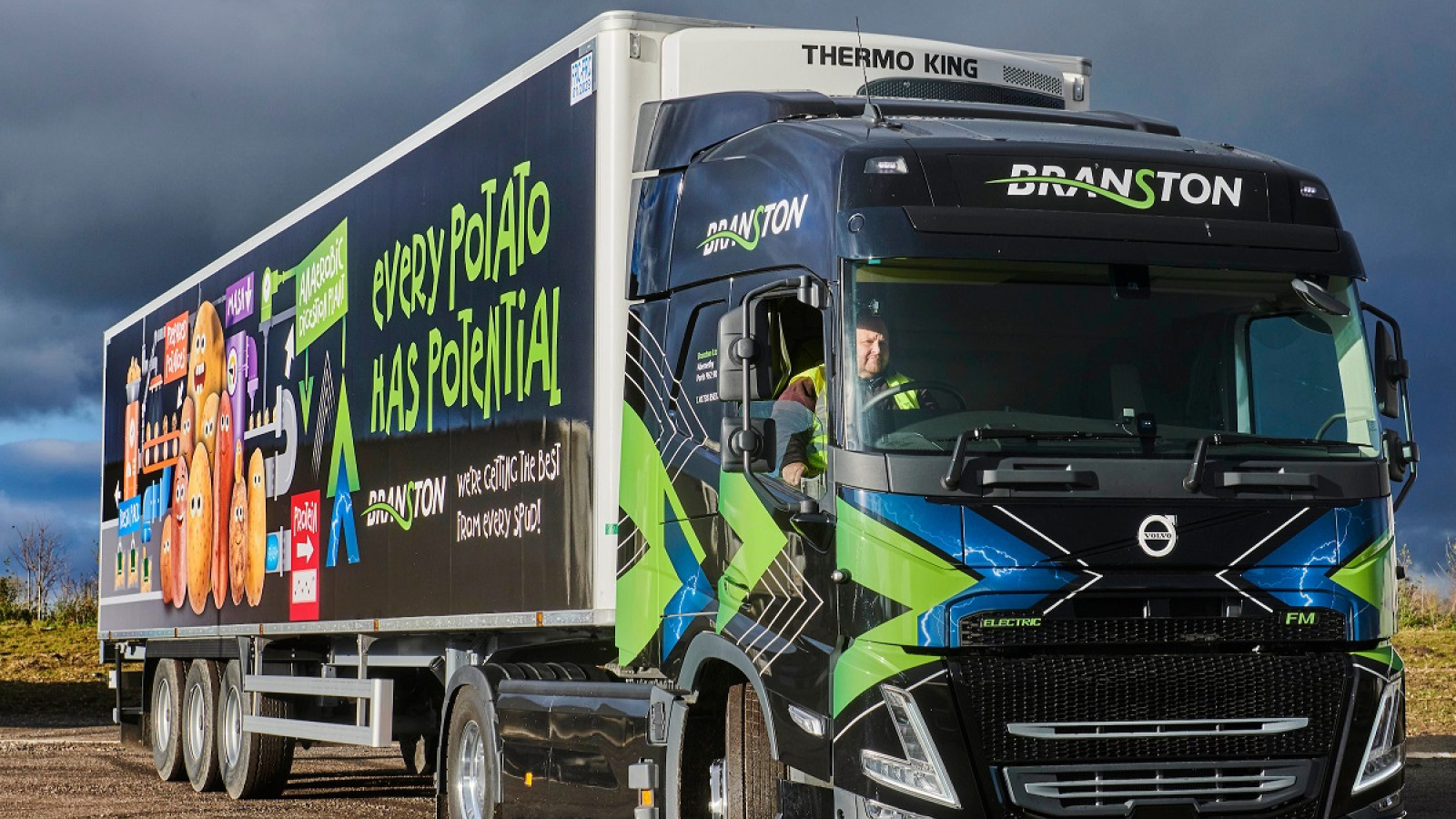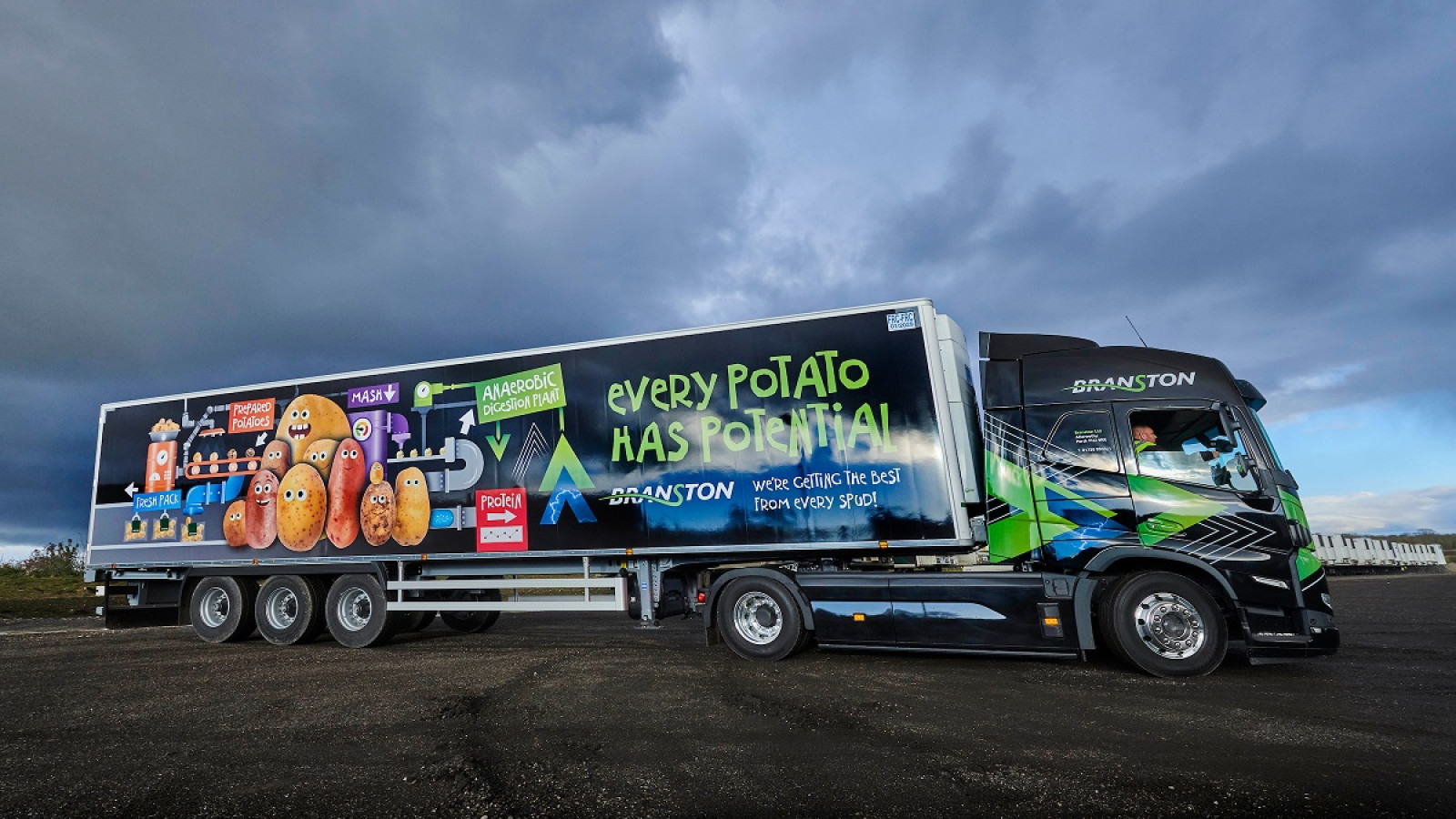Branston Net Zero Plans Step Up A Gear
New fully electric truck joins the fleet
Branston has introduced the first, fully electric truck to its fleet, as part of its ambitious plans to reach net zero by 2035.
Following a successful trial in June this year with Crossroads Truck and Bus Ltd - the truck dealer for Volvo - Branston has now permanently added a Volvo FM Electric 4x2 truck to its fleet. Transportation is a key focus area of the company’s wider net zero ambitions; reducing the carbon emissions of collecting and delivering many tonnes of fresh potatoes around the UK.
Paul Donkin, group transport manager at Branston, said: “This is a fantastic milestone for us to introduce our first electric vehicle (EV) to our transport network. After the trial, we knew we could start to integrate an EV into the fleet, and initially we’ll be using it to do regular depot deliveries to Livingston as well as a few farm trips to test the mileage and efficiency.
“Getting this EV is a big step, and we are training our drivers in the best way to drive it, which is quite different to a standard diesel truck. We're also investing in driver training to ensure that the rest of our fleet is driven as efficiently as possible. We can achieve a saving of 20% on miles per gallon when cruise control and acceleration are used strategically, which all helps to bring costs and carbon down.”
When compared to a traditional diesel truck, the Volvo FM Electric 4x2 truck could save up to 50 tonnes of carbon emissions each year, provided the correct infrastructure was in place UK-wide for maximum charging efficiency. One of the biggest investments is the fast charger, which reduces charging time from 10 hours to just two hours.
Paul added: “One of the challenges will be the infrastructure, or lack of it in some places. While we can do what we can as a business to work towards net zero, without infrastructure across the country keeping pace, there’s only so far we can go. Branston will be investing in a fast charger at our Scottish site and will be monitoring the performance of the EV to determine our next steps.
“We’re open minded to all avenues and know there are many routes we can take, including a hybrid approach combining EVs and hydrogen powered vehicles. This is just one of many changes we expect in our transportation of spuds in the next 10 to 15 years.”

